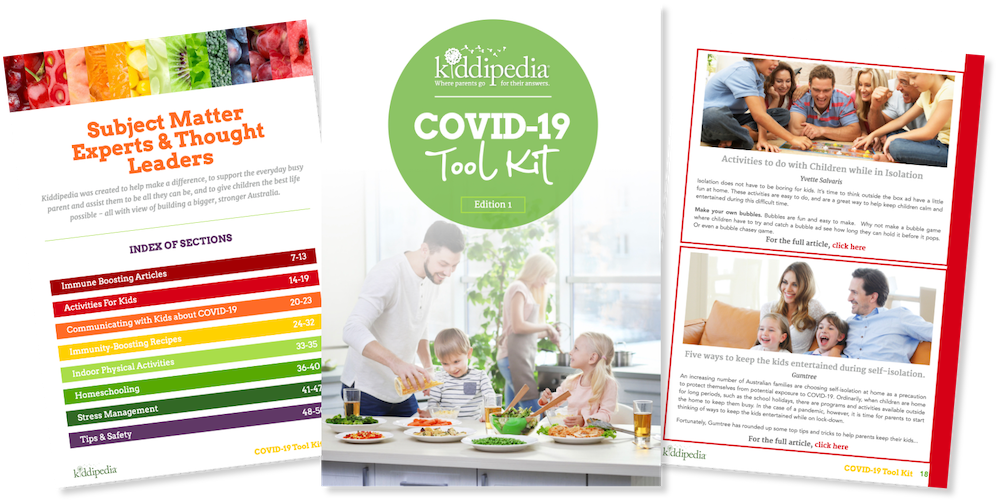Experts are urging parents and carers to be vigilant and take action to reduce the risks of burns and scalds this winter, a time of heightened burns risk.
The call comes at the beginning of National Burns Awareness Month– an Australia wide campaign to raise awareness of the prevention and appropriate first aid measures for minor burns.
Prevalence data from the Burns Registry of Australia and New Zealand (BRANZ) show that during 2016/17, nearly 1000 Australian and New Zealand children were admitted to a burns uniti. Scalds were the most common cause of burns in children (57%), followed by contact (23%) and flame (10%) burnsi.
Kidsafe Australia spokesperson, Holly Fitzgerald, highlighted the burn and scald dangers in the home kitchen, saying this was the location for half of all child burn injuries.
“The majority of burns are preventable. The kitchen is the most dangerous room of the house for a young child to be burned, usually occurring whilst near an adult preparing food or hot drinks. We need to be vigilant and take steps to restrict our children’s access to the kitchen during meal preparation times, to reduce the risk of a serious burn or scald occurring.”
“At Kidsafe, we recommend placing hot drinks safely away from table or bench edges and never holding a child with a hot drink in hand. All it takes is for them to throw their arms around and spill the hot water onto themselves. Hot liquid at 60◦C only takes one second to cause a third-degree burn to a child’s skin. Water boils at 100◦C,” said Ms Fitzgerald.
Other common places where children are at risk of burn injuries include the living room, bathroom, outdoor kitchen or garden, particularly when children were playing.
Dr Warwick Teague, Head of Trauma at the Royal Children’s Hospital in Melbourne said that burn injuries can have a long term impact on children, not just physically, but also mentally.
“Burn injuries really do have a long lasting effect on the whole family, so we need to do everything we can to prevent these from occurring.”
“If a burn happens, then it’s critical that cool running water is applied to the burn area for a minimum of 20 minutes. Administration of the correct first aid measures can make a significant difference in the child’s rehabilitation and long term outcome of the burn injury,” said Dr Teague.
Key burns facts:
- 79% of paediatric burns injuries occur in the homei.
- The rate of admission to Australian burns units for the Aboriginal and Torres Strait Islander population is more than triple that of the non-indigenous populationi.
As part of the National Burns Awareness Month, Kidsafe Australia is urging all parents and carers to download this simple safety checklist https://kidsafe.com.au/national-burns-awareness-month/ and follow some key steps to prevent and treat burns and scalds to children this winter:
- Prevent- take action to prevent burns and scalds as per https://kidsafe.com.au/national-burns-awareness-month/
- Remove- remove yourself from danger. Remove any clothing and jewellery from the burn area unless stuck to the skin
- Cool- place the burn under cool, running water for twenty minutes. Items like ice, oil or butter should never be placed on a burn
- Cover- cover the burn with a clean dressing
- In the absence of cool running water, use a hydrogel like Burnaid® to help cool the burn and relieve pain.
- Seek medical attention if the burn or scald is on the face, hands, feet, genitals or buttocks, if it is larger than a 20 cent coin or blistered
National Burns Awareness Month is an initiative run by Kidsafe Australia with the support of mundicare® Burnaid® gel. It is held in June each year as there is a significantly increased risk of burns during this time[ii]. A series of national educational and awareness initiatives will be run throughout the month to raise awareness regarding the prevention and treatment of minor burns.
[i] BRANZ Burns Registry of Australia and New Zealand, Annual Report, ANNUAL REPORT, 1st July 2016 –30th June 2017
[ii] BRANZ Burns Registry of Australia and New Zealand, Annual Report, ANNUAL REPORT, 1st July 2013 –30th June 2014








